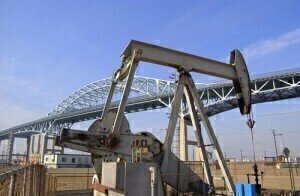Fuel for Thought
How to Estimate the Ultimate Recovery of an Oil Well
Aug 25 2014
The estimated ultimate recovery (EUR) of an oil well is the process of estimating how much cumulative oil can be mined from that particular well over the entire course of its lifespan. This estimation is imperative if we are going to determine how much oil remains in a well, how efficient previous mining processes have been and how worthwhile future investment of time and money in retrieving the remaining reserves will be.
Interestingly, according to the US Department of Energy, oil extraction using only primary and secondary methods may leave up to 75% of the oil still in the reservoir. This means that pump jacks, natural oil escape and water and gas injection will only extract at best 50% of the oil and at worst a mere 25% of its capacity. In order to address this wastefulness, new tertiary methods, often known as enhanced oil recovery (EOR), have been developed. For more information on how such strategies are being pursued, read the article: New Research Applications Presented at the SCA Annual Symposium.
The EUR Calculation
The EUR is calculated via a complicated process which differs greatly between coal-bed oil reserves and all other types. This is because with a coal-bed reservoir, water is required to be injected before the oil can be extracted. Therefore, the EUR graph for a coal-bed reservoir will show a sharp upsurge in oil extraction at the outset of the process (shortly after the water is injected), but which will slow down, before peaking and declining. Meanwhile, other oil wells should show a steadier increase and a decline curve.
Firstly, the available production data is taken from all wells – this is used to extrapolate the individual production phase. A minimum of several months’ production data is required to avoid compromising the integrity of the estimation – those wells which have not been active for more than 2 years are immediately discounted as having already reached their EUR.
Then, depending on in which phase of production each well was situated, a hyperbolic or exponential curve was applied to the data present and continued into the future to estimate its increase and/or decline. The lifespan was then estimated and varied a thousand times for each well using the Monte Carlo simulator. This simulator is programmed to ignore factors such as operating costs and retail prices, instead concentrating only on time as the single factor to the lifespan of the well. If the harvested oil was less than 2% of the predicted EUR, the data was ignored as an anomaly. From this, the mean figure was taken and was assumed to be the EUR of the well itself.
It is acknowledged that the EURs of wells can and most likely will change over time, due to changes in techniques, the drilling of other wells and other outlying factors. However, this EUR represents the best estimation of a well’s potential yield to date.
Digital Edition
PIN 25.1 Feb/March
March 2024
In This Edition Safety - The technology behind the ION Science Tiger XT - Safety with ammonia and LOHCs as hydrogen carriers Analytical Instrumentation - Discussion on new tribology te...
View all digital editions
Events
Apr 28 2024 Montreal, Quebec, Canada
Apr 30 2024 Birmingham, UK
May 03 2024 Seoul, South Korea
May 05 2024 Seville, Spain
May 06 2024 Riyadh, Saudi Arabia


















